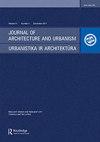BEYOND PHYSICAL BOUNDARIES: THE IMPACT OF DIGITAL RENDERING ON SPATIAL IDENTITY
IF 0.8
0 ARCHITECTURE
引用次数: 0
Abstract
This research investigates the concept of spatial identity by examining its definitions and Plato’s Allegory of the Cave, as well as Michel Foucault’s concept of heterotopia, to explore the relationship between the physical and digital worlds. To analyze the concept of spatial digital identity, we conducted a literature review of academic articles and case studies that focus on the intersection of digital technology and spatial identity. Using a thematic approach, we identified key themes regarding the influence of digital technology on physical spaces and its impact on spatial identity. Through a case study of Times Square, we examined the role of the digital world in shaping spatial identity, paying particular attention to the impact of urban screens, social media, online interactions, and digital applications. The study highlights the importance of considering the digital world in the planning, design, and use of public spaces, as it plays a critical role in shaping their spatial identity. Finally, the research highlights the importance of being aware of the impact of the digital world on spatial identity in order to develop a comprehensive and integrated approach to the design of public spaces in the contemporary world.超越物理边界:数字渲染对空间身份的影响
本研究通过考察空间身份的定义和柏拉图的洞穴寓言,以及米歇尔·福柯的异托邦概念,来探讨物理世界和数字世界之间的关系。为了分析空间数字身份的概念,我们对关注数字技术与空间身份交集的学术文章和案例研究进行了文献综述。采用主题方法,我们确定了数字技术对物理空间的影响及其对空间特性的影响的关键主题。通过对时代广场的案例研究,我们研究了数字世界在塑造空间身份方面的作用,特别关注城市屏幕、社交媒体、在线互动和数字应用的影响。该研究强调了在公共空间的规划、设计和使用中考虑数字世界的重要性,因为它在塑造空间特征方面起着关键作用。最后,该研究强调了意识到数字世界对空间身份的影响的重要性,以便为当代世界的公共空间设计开发一种全面和综合的方法。
本文章由计算机程序翻译,如有差异,请以英文原文为准。
求助全文
约1分钟内获得全文
求助全文
来源期刊

Journal of Architecture and Urbanism
ARCHITECTURE-
CiteScore
1.30
自引率
14.30%
发文量
12
审稿时长
15 weeks
期刊介绍:
The Journal of Architecture and Urbanism publishes original research on all aspects of urban architecture.
 求助内容:
求助内容: 应助结果提醒方式:
应助结果提醒方式:


